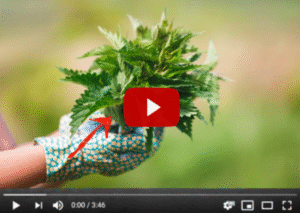Maintaining a healthy prostate is an essential part of men’s overall well-being, especially as they age. The prostate gland plays a critical role in the male reproductive system, and supporting its function can help prevent issues such as benign prostatic hyperplasia (BPH), prostatitis, and even reduce the risk of prostate cancer. While regular medical checkups and lifestyle habits are key, incorporating specific spices and herbs into your diet can naturally enhance prostate health. In this article, we’ll explore the most effective spices and herbs that support prostate function and explain how to use them.
Why Spices and Herbs Matter for Prostate Health
Spices and herbs are more than flavor enhancers—they are potent sources of bioactive compounds with anti-inflammatory, antioxidant, and anti-cancer properties. Chronic inflammation and oxidative stress are key contributors to prostate enlargement and prostate-related diseases. Herbs and spices like turmeric, ginger, saw palmetto, and green tea contain compounds that reduce inflammation, neutralize free radicals, and promote healthy prostate function. Integrating these natural remedies into your daily meals or beverages can provide long-term benefits for prostate health.
Top Spices That Support Prostate Function
1. Turmeric
Turmeric contains curcumin, a powerful anti-inflammatory and antioxidant compound. Curcumin helps reduce chronic inflammation in the prostate, which is linked to benign prostatic hyperplasia (BPH) and prostate cancer. Studies have shown that curcumin may also inhibit the growth of cancer cells in the prostate.
How to use:
- Add ½–1 tsp of turmeric powder to smoothies, soups, or curries.
- Mix turmeric with black pepper to improve absorption.
- Try turmeric tea or golden milk as a daily drink.
2. Ginger
Ginger is renowned for its anti-inflammatory and anti-cancer properties. Gingerols, the active compounds in ginger, help reduce inflammation in the prostate and may slow the progression of prostate-related conditions.
How to use:
- Add fresh or powdered ginger to teas, smoothies, or juices.
- Include ginger in stir-fries, soups, or salad dressings.
- Sip ginger water for its soothing and anti-inflammatory benefits.
3. Garlic
Garlic is rich in sulfur-containing compounds, such as allicin, which exhibit anti-inflammatory and antioxidant effects. Regular consumption of garlic may help reduce prostate enlargement and support overall immune function.
How to use:
- Add fresh garlic to salads, pasta dishes, and roasted vegetables.
- Include garlic in daily cooking for natural flavor and health benefits.
- Avoid overcooking to preserve its active compounds.
4. Cayenne Pepper
Cayenne pepper contains capsaicin, which has anti-inflammatory and antioxidant properties. Capsaicin may improve blood circulation and reduce inflammation, indirectly supporting prostate health.
How to use:
- Sprinkle cayenne pepper on soups, salads, or roasted vegetables.
- Mix into sauces or marinades for a spicy kick.
- Use in small amounts to avoid gastrointestinal discomfort.
5. Black Pepper
Black pepper contains piperine, which enhances the absorption of other beneficial compounds, such as curcumin from turmeric. Piperine itself also has antioxidant and anti-inflammatory properties, contributing to prostate support.
How to use:
- Add freshly ground black pepper to soups, salads, and main dishes.
- Combine with turmeric for maximum anti-inflammatory effect.
- Use in daily cooking to boost nutrient absorption.
Top Herbs That Support Prostate Function
1. Saw Palmetto
Saw palmetto is one of the most well-known herbs for prostate health. It may help reduce urinary symptoms associated with BPH by inhibiting the conversion of testosterone to dihydrotestosterone (DHT), a hormone linked to prostate enlargement.
How to use:
- Take saw palmetto supplements as recommended by a healthcare professional.
- Use saw palmetto tea for mild benefits.
2. Green Tea
Green tea is rich in polyphenols, particularly epigallocatechin gallate (EGCG), which exhibits strong antioxidant and anti-cancer properties. Regular consumption may reduce the risk of prostate cancer and support healthy prostate tissue.
How to use:
- Drink 2–3 cups of green tea daily.
- Add green tea extract to smoothies or health drinks.
3. Pygeum (African Plum)
Pygeum extract, derived from the bark of the African plum tree, is commonly used to relieve urinary symptoms associated with prostate enlargement. It supports bladder function and reduces inflammation in the prostate.
How to use:
- Take pygeum supplements in recommended doses.
- Consult a healthcare provider for appropriate usage.
4. Nettle Root
Nettle root has anti-inflammatory properties that may help manage BPH symptoms. It is often combined with other herbal extracts for enhanced prostate support.
How to use:
- Take nettle root supplements as directed.
- Use in herbal teas combined with saw palmetto for synergistic effects.
5. Rosemary
Rosemary is rich in antioxidants and anti-inflammatory compounds. It may help protect prostate cells from oxidative stress, supporting long-term prostate health.
How to use:
- Add fresh or dried rosemary to roasted vegetables, meats, and soups.
- Use rosemary-infused oils for cooking or dressings.
How to Incorporate Spices and Herbs Into Your Daily Routine
- Daily Cooking: Add herbs and spices to your meals—soups, salads, stir-fries, and roasted vegetables.
- Smoothies and Juices: Blend turmeric, ginger, and green tea extracts into daily drinks for maximum nutrient intake.
- Teas and Infusions: Drink herbal teas such as green tea, ginger tea, or saw palmetto tea to support prostate function.
- Supplementation: For herbs like saw palmetto, pygeum, and nettle root, consider standardized supplements under professional guidance.
- Spice Combinations: Combine turmeric with black pepper or ginger with cayenne to boost absorption and effectiveness.
Lifestyle Tips to Maximize Prostate Health
While herbs and spices are valuable tools, they work best alongside a healthy lifestyle:
- Exercise regularly: Physical activity helps regulate hormones and reduce prostate inflammation.
- Eat a balanced diet: Emphasize fruits, vegetables, whole grains, and lean proteins.
- Stay hydrated: Proper hydration supports urinary health.
- Limit alcohol and processed foods: Excessive alcohol and processed foods may increase prostate stress.
- Regular medical checkups: Early detection of prostate issues is essential, especially after age 40.
Conclusion
Spices and herbs are powerful natural allies in supporting prostate health. Incorporating turmeric, ginger, garlic, saw palmetto, green tea, and other beneficial herbs and spices into your daily routine can reduce inflammation, protect against oxidative stress, and promote healthy prostate function. When combined with a balanced diet, regular exercise, and proper medical care, these natural remedies provide a holistic approach to maintaining prostate wellness for life.
By embracing these natural solutions, you can take proactive steps toward optimal prostate health, improve urinary function, and support overall vitality.
>>> Backyard weed fixes enlarged prostate & provides complete relief



